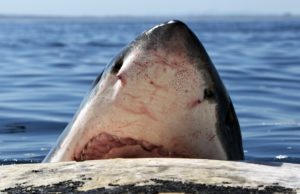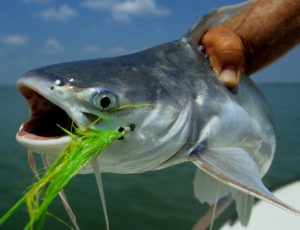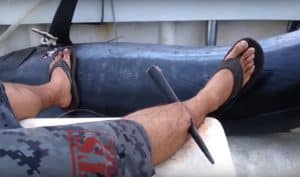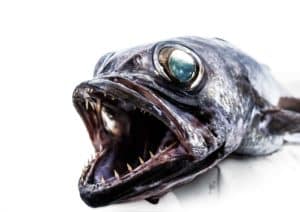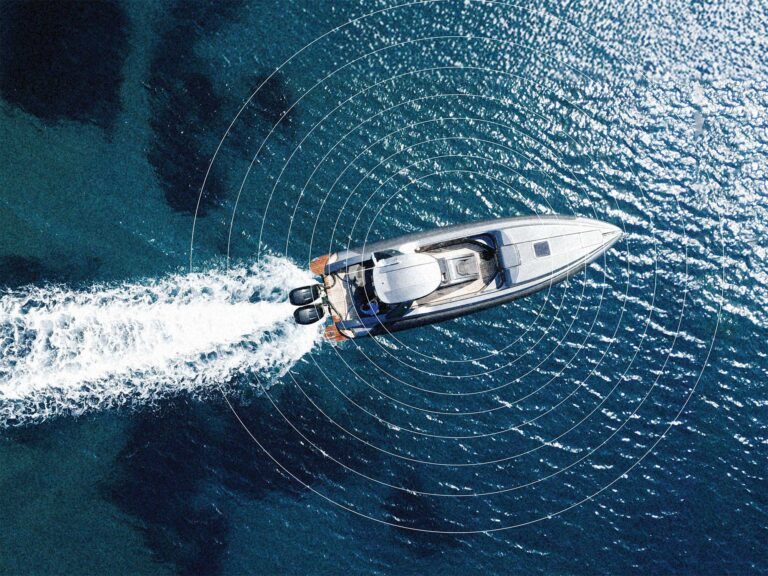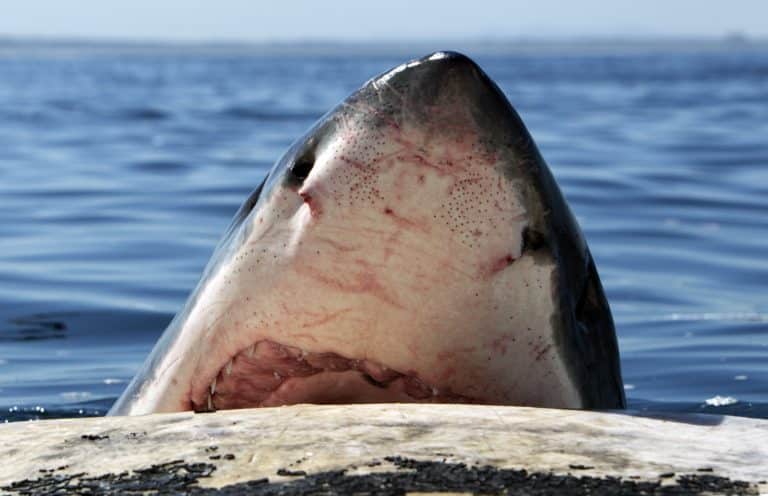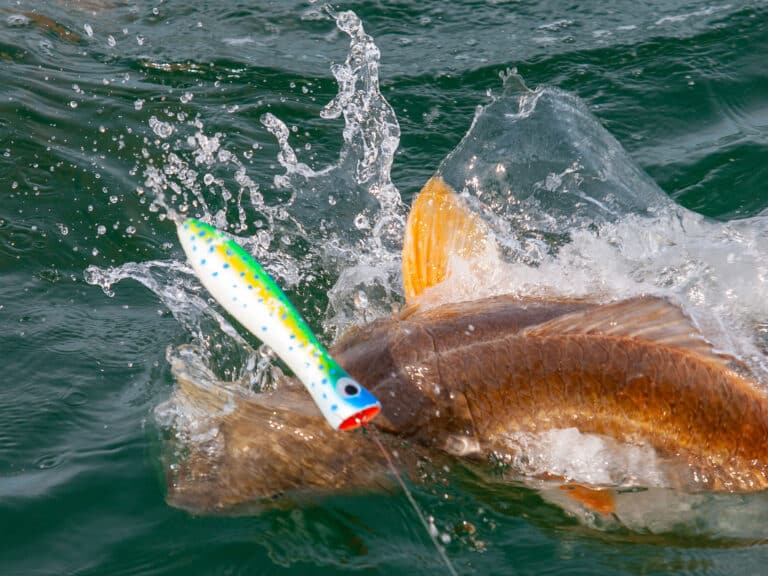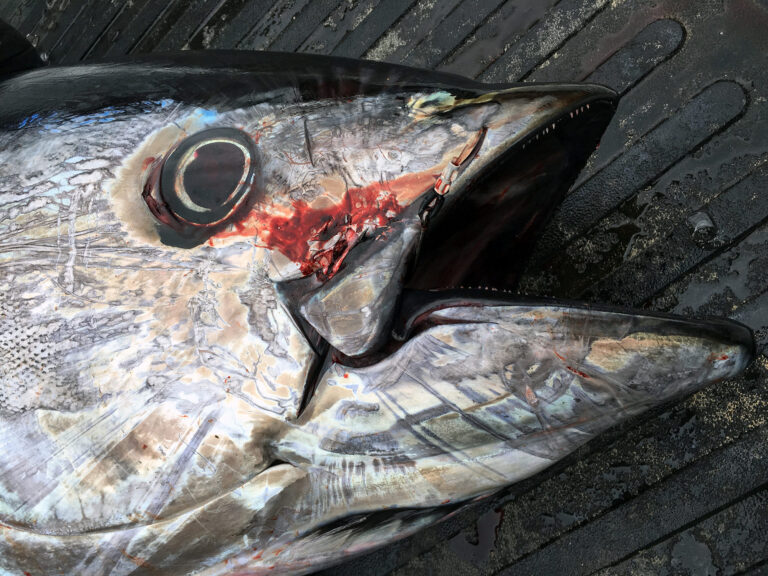What Type of Filefish Is This?
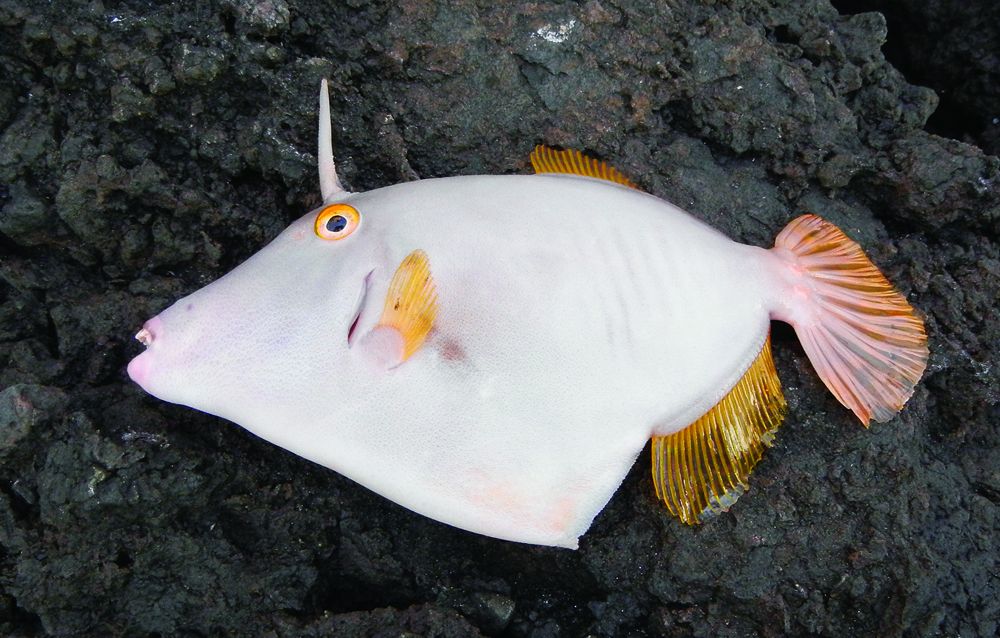
QUESTION: My buddy Dan and I were fishing off the lava rocks in Kona, Hawaii, this summer and caught all kinds of different reef fish that we were able to identify after looking at pictures online and local fish-identification charts available on the island. But this one we couldn’t find anywhere. It looks like some type of triggerfish or unicorn fish, but none of them were this color nor had the spike pointing straight up. I saw one that looked like this washed up on the Pacific shore in Cabo San Lucas many years ago. Can you tell us what it is? — Frank Gouveia, Pleasanton, California
ANSWER: It’s no surprise you found this one hard to identify, Frank, because it appears you were lucky enough to catch an unusually pale, color-reversed specimen of barred filefish, Cantherhines dumerilii. Also known as the yelloweye filefish, the more colorful adult males of this species are usually a dark-gray color in the body, with several lighter vertical bars along the flanks that contrast with their translucent yellow dorsal and anal fins and the striking yellow/orange tail. On the other hand, juveniles of this species can be almost black but are covered in many small white dots. Barred filefish grow only to around 15 inches long.
They occur widely throughout the tropical Indo-Pacific from Mauritius in the Indian Ocean and across the Pacific from Hawaii to Japan, and as far east as the west coasts of Colombia and Panama. They’re bottom grazers usually encountered in pairs (one male, one female) at depths of 12 to 100 feet around tropical islands. The species feeds mainly on the tips of branching corals when available, but lucky anglers have a chance of encountering them when they switch to other invertebrate prey such as mollusks (as well as sponges and bryozoans). — Dr. Ben Diggles
A Deep Dropping Surprise Catch
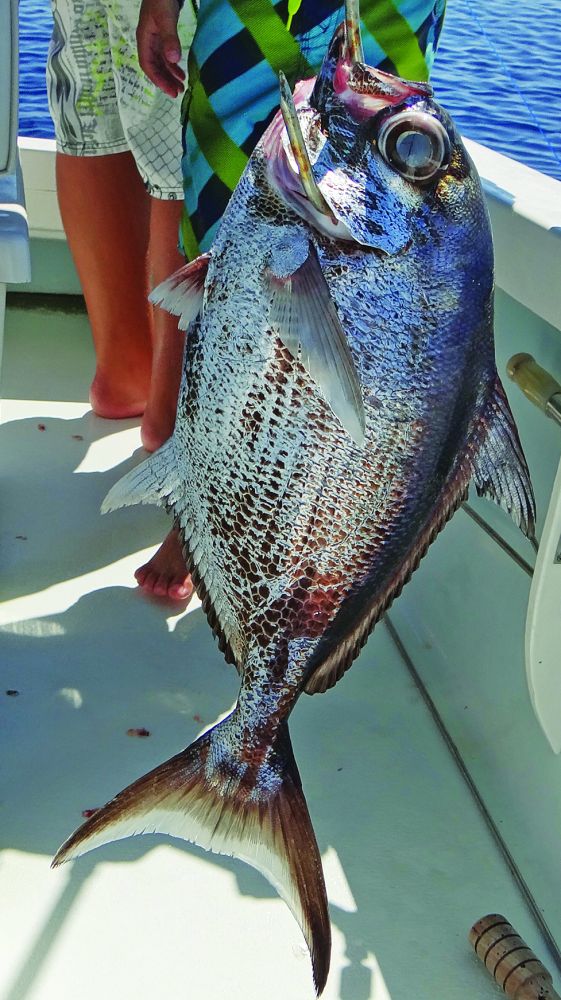
QUESTION: While deep-dropping in about 1,000 feet of water off Exuma, Bahamas, we caught pomfret on two successive drops. Both times they came off the bottom easily, but about midway up, there was violent action on the rod as if hit by a shark. It was the pomfret making its last run — strong! They came up dead. We thought this might be a sickle pomfret. Can you identify the species? — Tim Thompson
ANSWER: Based on color, body shape and the relative sizes of the fish’s fins, your catch is a tropical pomfret, Eumegistus brevorti, one of nine pomfret species known to occur in the western central Atlantic. You asked if it might be a sickle pomfret (Taractichthys steindachneri), but that species inhabits the Indo-Pacific and eastern tropical Pacific regions and has never been reported from the Atlantic. The anal fin of the sickle pomfret is considerably longer than that of comparatively sized tropical pomfret, but both species share a white posterior margin on their caudal fins.
The tropical pomfret is found throughout the western central Atlantic from Florida through Brazil, including the Gulf of Mexico and Caribbean Sea. It has been reported to grow to a length of 2 feet, suggesting you caught a couple of particularly large individuals. This pomfret inhabits depths between approximately 1,250 and 4,350 feet, so your catches were shallow for the species. Tropical pomfret are occasionally found in fish markets, where they command a high price. Intel from reliable sources suggests that a high price is justified for this very fine-eating fish. — Dr. Ray Waldner (deceased)
An Uncommon Scorpionfish
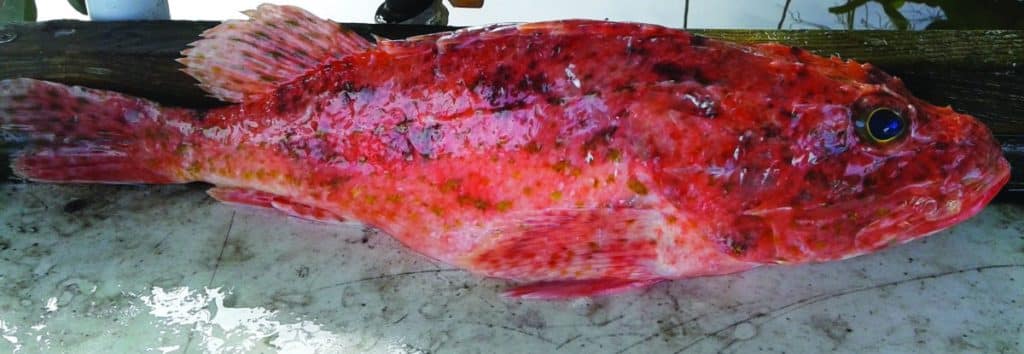
QUESTION: I caught this fish off the bottom in 400 feet of water off Jupiter, Florida. It had lots of sharp spines. My fishing partner, who called it an orange roughy, said he has caught several over the years. A Web search told me it’s not an orange roughy, but I couldn’t find anything close to it. Any ideas? — Stuart Montgomery, Jupiter, Florida
ANSWER: Stuart, you appear to have caught a longsnout scorpionfish, Pontinus castor. This species is known to reach a length of about 1 foot, so your catch is quite large. The longsnout can be found on rocky bottoms from Bermuda through southeastern Florida, the Bahamas and islands in the greater Antilles chain, at depths between 150 and 1,350 feet. It’s likely that the species’ range is greater than reported.
The longsnout scorpionfish sometimes puts in an appearance at fish markets. Although I haven’t seen a report on the longsnout scorpionfish’s edibility, many scorpionfishes are highly regarded as table fare, and I’m sure this one is no different. Like other scorpionfishes, the longsnout has venom-producing tissue associated with spines in its dorsal, pelvic and anal fins, and can deliver a painful sting if an angler is jabbed. — Dr. Ray Waldner (deceased)
A Flounder with Weird Colors
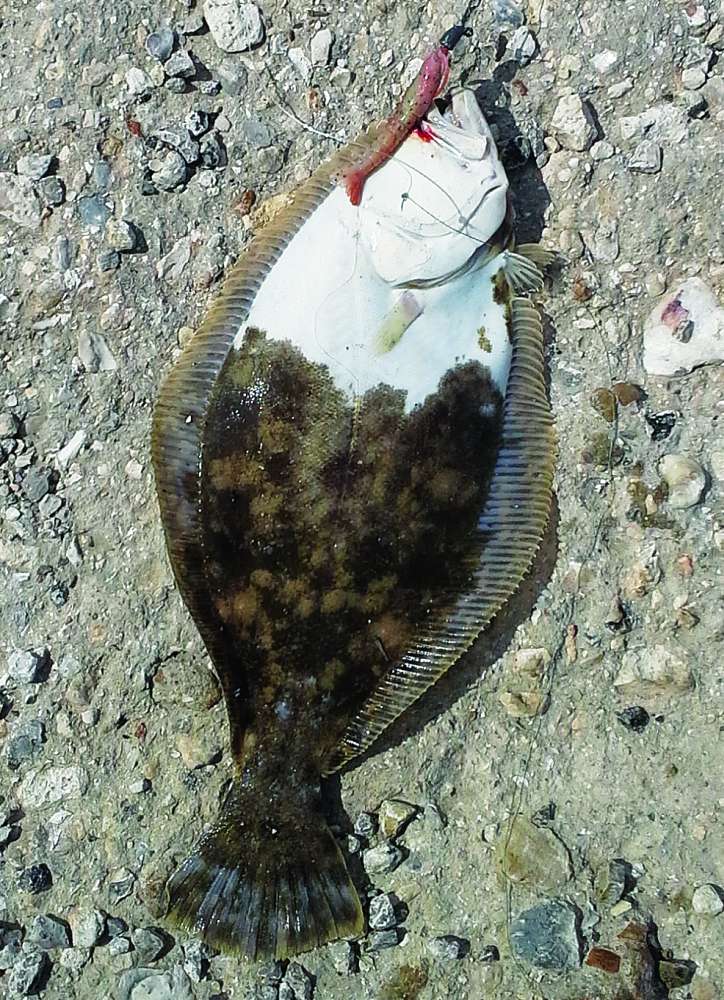
QUESTION: My son and his girlfriend were fishing near Matagorda, Texas, when she caught this flounder with its normally white underside partially colored brown like the fish’s two-eyed upper side. I have never seen or heard of this and was wondering how rare a catch it was. — Buddy Toepfer, Corpus Christi, Texas
ANSWER: Pigment in flounder is determined very early in development. When flounders metamorphose as larvae, the pigment cells undergo a transition as well, normally migrating to the eyed side (the “up” side of a flounder — the side with both eyes). On rare occasion, some cells mysteriously migrate to the blind side (the “down,” normally white, side with no eyes). I’ve seen a few flounder partially pigmented this way, but it’s certainly a rare occurrence. — Dr. Bob Shipp
READ MORE: A Fish Called a “Bumpie”
A Strange Deepwater Grouper
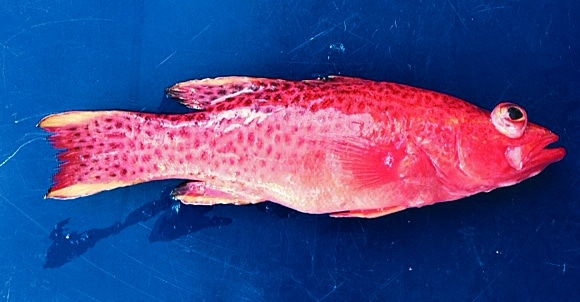
QUESTION: While fishing with a friend over the weekend, we caught this 10-inch fish in about 600 feet of water on cut bait, right on the bottom. I have never seen it before. What is it, and could we have eaten it? — Len Nakano, Kona, Hawaii
ANSWER: What you have there is an elegant anthias, Caprodon unicolor. This species is one of the largest members of the subfamily Anthiinae (basslets), within the family Serranidae (groupers). This anthias occurs in the central Pacific, around the Hawaiian Islands and north to Midway Atoll, living near coral and rocky reefs on sandy or hard bottom, usually at depths between 150 and 700 feet. They grow to around 15 inches long and are considered to be quite a good food fish. While males of this species can exhibit a more colorful pink hue with vertical red bars and numerous mottled yellow blotches on the flanks, the uniform red-orange color of this one suggests it’s a female.
Scientists once considered the elegant anthias synonymous with the sunrise perch (Caprodon schlegelii) that occurs around the reefs south of Japan, but they have now been separated based on genetic data as well as the fact that female C. schlegelii have an uninterrupted white color to the entire rear margin of the tail fin while for C. unicolor, the white areas occur only on the tips of the tail. Members of the genus Caprodon feed mainly on zooplankton but have been known occasionally to take small baits. (Thanks to Dr. Jeff Johnson, from the Queensland Museum, for helping to confirm the identity of this fish.) — Dr. Ben Diggles

